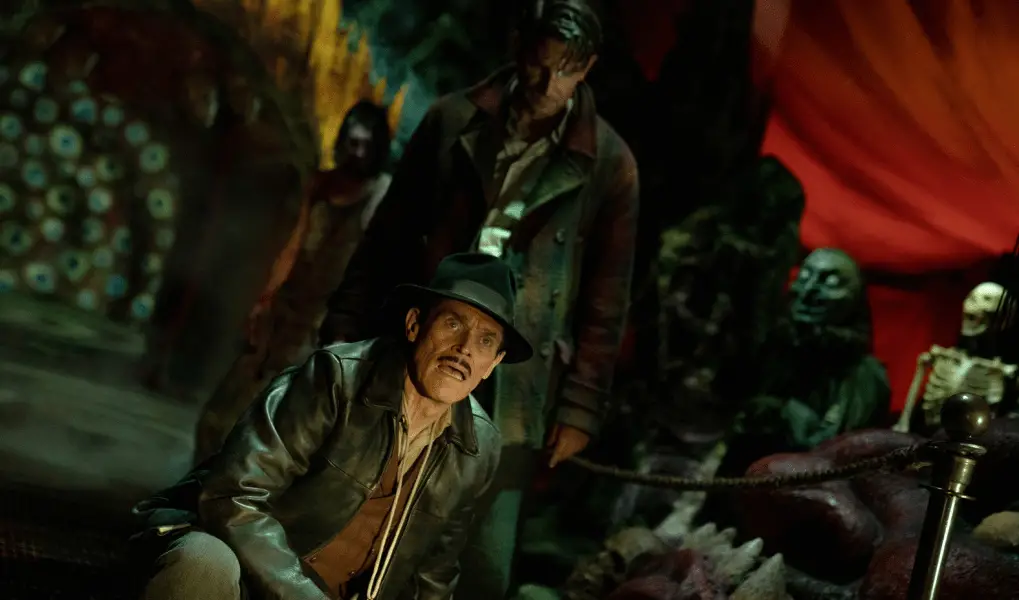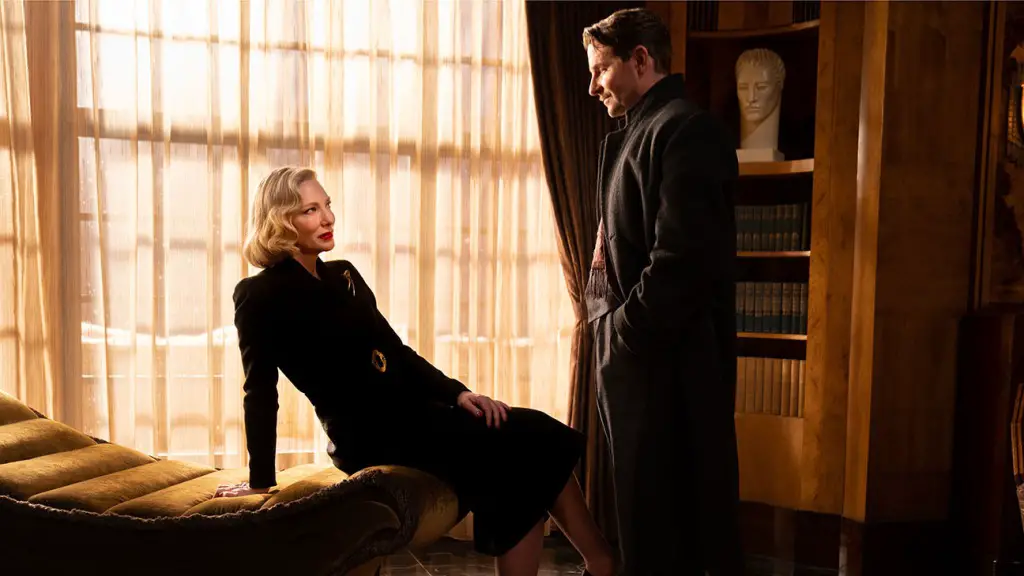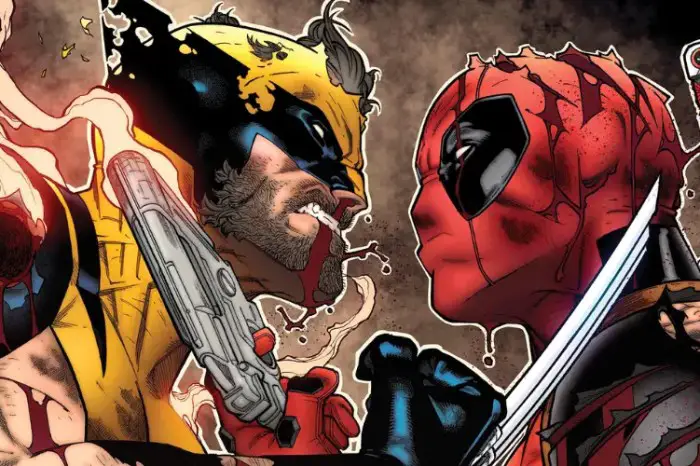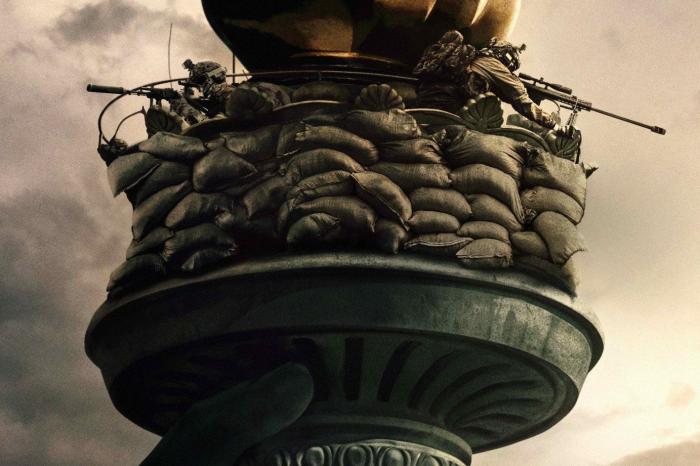‘Nightmare Alley’ (2021) Review: “A Noir Spiral Into Depravity”
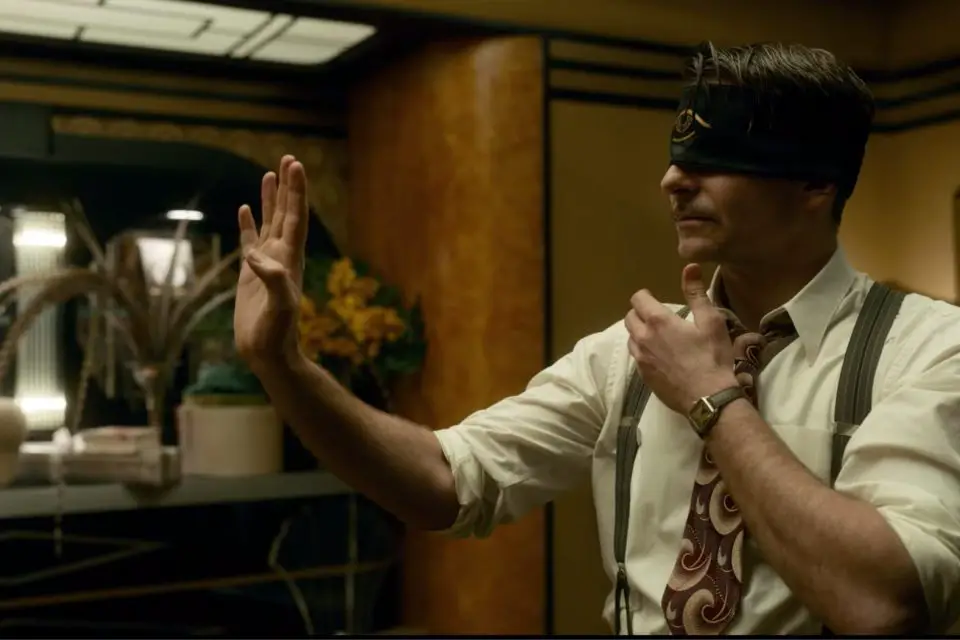
Guillermo del Toro’s body of work spans a great many backdrops. United by his gothic flair, films like Pan’s Labyrinth and 2018 Best Picture winner The Shape of Water tackle the human condition through the guise of monsters. Each film of his, rarely released within more than 3 or so years of each other, provides an independent experience. In 2021, Nightmare Alley represents his biggest departure yet: a grounded noir that wades into depravity more than any of his prior work.
READ: ‘West Side Story’ (2021) Review: “One Step Forward, One Huge Step Back”
This is not the first time William Lindsay Gresham’s novel has been adapted for the screen. The Tyrone Power-starring film from 1947 is a classic in its own right, after all. In this version, however, what del Toro brings to the table in his direction is meticulousness. Nightmare Alley is a story of hedonism, desire for more. Although we know little about our protagonist Stanton Carlisle (Bradley Cooper), we can see the lust growing in his eyes when he arrives at a traveling carnival.
Learning their tricks of the trade, he becomes as good a two-bit scammer as any good carny. Under the tutelage of magnificently played carnival owner Clem (Willem Dafoe) and fortune teller Zeena (Toni Collette), he finds himself in possession of an immense gift of persuasion. The beautiful, naive Molly Cahill (Rooney Mara), styled “the electrical girl” for her ability to withstand a large amount of electric current, catches his eye instantly.
Nightmare Alley withstands no issue holding attention in its first act. The film’s vision of the traveling carnival is intoxicating. Cinematographer Dan Lautsen conveys the comforting Americana image of the classic carnival juxtaposed with its seedy underbelly with sharpness and life. Editor Cam McLauchlin’s aces work only helps with this, as does a classy (highly memorable, too) score by Nathan Johnson. Special praise to del Toro and co-writer Kim Morgan for making each moment spent in the carnival immensely watchable. There’s a palpable allure there, same as it was in the novel, of stepping into this world. Exposition is a treat when it’s this well done.
It’s almost a shame that Nightmare Alley must leave the carnival behind. Almost. As Stanton flees the operation with Molly to take their “mentalism” act to the big leagues, the film struggles for a bit with what to do next. Stanton’s ascendancy to the top feels endless. That is, until Carlisle realizes the old adage that with great power… comes a desire for more power. Bright colors give way to a paler palette. Johnson’s near-soothing score turns more manic. More characters are introduced. Nightmare Alley leaves its pleasing chrysalis to reveal itself to be something nastier, more challenging, overall better.
From the introduction of sultry psychiatrist Lilith Ritter (Cate Blanchett), Nightmare Alley fashions itself an actor’s showcase. Blanchett, doing her very best noir femme fatale, nails her end of an erotic game of cat and mouse. For his part, Cooper is transcendent as a man full of bravado that’s threatening to burst at the seams. All the while Molly is a brutally sad figure who one can sense simply wants out of the game.
READ: ‘The Sex Lives of College Girls’ Season 1 Review: “The Reality of Growing Up”
del Toro, the cast, and by proxy the film at large hit their stride upon the introduction of Lilith’s introduction to Carlisle of Ezra Grindle (Richard Jenkins), a rich and reclusive figure who seeks out his talents. He represents a different kind of greed than Stanton; a figure that you practically want to shout at him to get away from before he is found out. Strangely, the closest film in kind to Nightmare Alley is Uncut Gems in the utter cringing fascination of trying to see how this man can clean up his mess.
Believe it or not, Nightmare Alley is an even more nihilistic film. As all the pieces fall into place, and the walls start closing in on Stanton and the audience, the craft is unreal. Houses of cards must come down, though rarely do they do so in this clean of a manner. Scenes in the endgame of the film feel in competition to top each other for the most riveting scene in a 2021 film.
None, however, can even come close to the ending. Those who have read the book know what’s coming. Even they, I suspect, might not be prepared for how powerful said ending is. If Bradley Cooper doesn’t get awards attention for this scene, there is no justice. It puts a tight bow, exclamation mark, and expands the film into the mind of the audience forever.
Of course, Nightmare Alley is an adaptation of an existing tale. But what does it matter? The theme of “man or beast” established early in the film pays off dividends in a movie that is ferocious. Decadent. Made in such a manner to make other filmmakers look lazy. Wherever Guillermo del Toro takes us, we are in the assured hands of a master. – James Preston Poole
Rating: 9/10
Nightmare Alley is in theaters on December 17, 2021.

